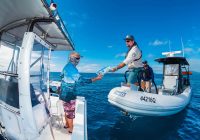As an industry we should be ensuring that every effort is made to empower our industry Association bodies with information. Collectively that information provides the basis to assist them not only to advocate on your behalf but is also provides the foundation to let us all understand what is happening in the marketplace.
Now in its 10th year, the Marina Industry Association has done a tremendous job with the assistance of research specialists to gather and prepare findings for these exact purposes.
In early June, Marine Business News shared the news that the 2021 Health of the Australian Marina Industry Survey (HAMIS) had been released. The result is excellent, and we have now published some summary extracts within our Resources Page.
Summary – Part 1 Summary – Part 2 Summary – Part 3However, the process by which data is collected is not always that easy. The higher the number of responses the Association bodies get to their surveys, the better we can empower them to work on our behalf.
I have always set aside for industry research. If we invest in our Associations to work with us, our membership fees are better served if we also set aside time every year to complete the surveys. Don’t worry about your data getting into the hands of the competition. It won’t. All good researchers protect their respondent’s data to the nth degree. If you are concerned, take a minute to speak to your Association body.
The 2021 Health of the Marina Industry Survey is riveting reading.
It was supported by International Marine Consultants (IMC) and recently presented by MIA President, Andrew Chapman at Marinas22 to over 320 delegates.

The 106-page report is based on data provided by 137 marinas (37 clubs, 100 commercial) representing 46% of the 296 known marinas (over 20 berths / spaces) in Australia and was distributed to all marinas that participated in the data collection on 30 May 2022. The high response rate and consistency of the survey instrument means that the resultant data is considered highly valid and reliable.
The report outlines the industry profile, highlights the financial and operational performance of marinas and the broader economic and social contributions of the industry. The consolidated data is further broken down to examine results by marina category, size, type and location. The report is a valuable tool for operators and owners to benchmark their marina operations, identify potential for improvement and recognise opportunities.
The report concludes that the pandemic confirms and both the resiliency of the industry and the robust value of marinas in Australia. In addition to providing recreational opportunities to millions of Australians, marinas produced significant economic and fiscal impacts which include

- Direct employment of 3,300 persons with a payroll of nearly $149M
- Contributions to government through taxes and lease payments exceeding $95M
- Capital investments of $183M
- Provided tenancy to 1700 business and engage 8,700 independent contractorsList Item
The results continue to indicate there is inadequate marina boat storage capacity, especially in-water storage spaces, in many locations in Australia. Marinas have healthy waitlists and strengthening occupancy rates, now exceeding 85% nationally. Despite this, 52% of marinas didn’t increase their rates in 2020-21.
The information derived from the survey is extremely important to the marine associations in making representations to governments on behalf of industry and to marina owners and operators when liaising with local governments around potential developments and assessing the viability and benefits of new developments or existing facility enhancements.
As has been the case for the last decade, the HAMIS was commissioned by the Marina Industries Association (MIA) and conducted by the Recreational Marine Research Centre, Michigan State University in the US. It is important to recognise the contributions of maritime planning and design experts, International Marine Consultants (IMC) for providing important funding to ensure the continuation of the research. The survey will be conducted again in late 2023.
The summaries certainly give you a solid overview, but to get the full benefit, it is recommended that the full survey be purposed through the MIA website. It is $750 for members, $1,549 non-members.







